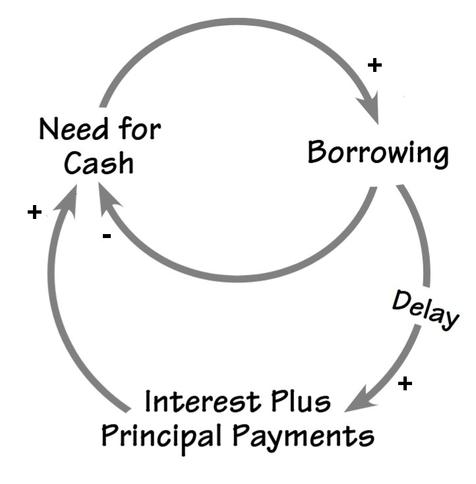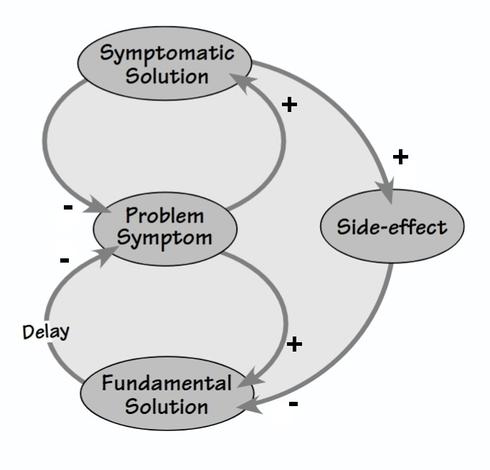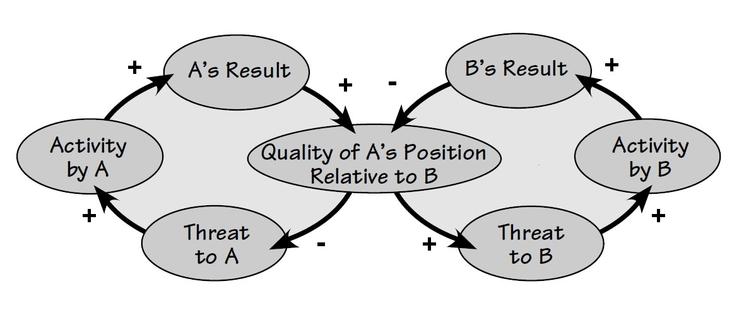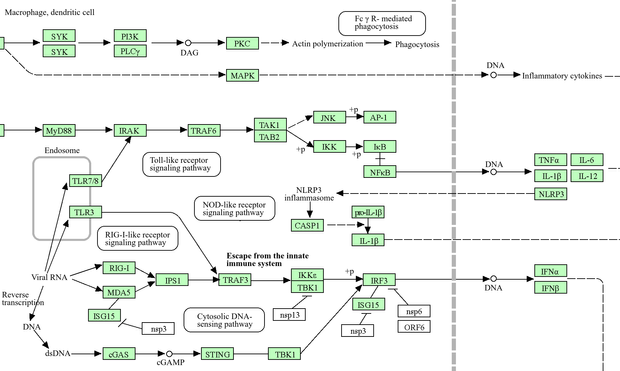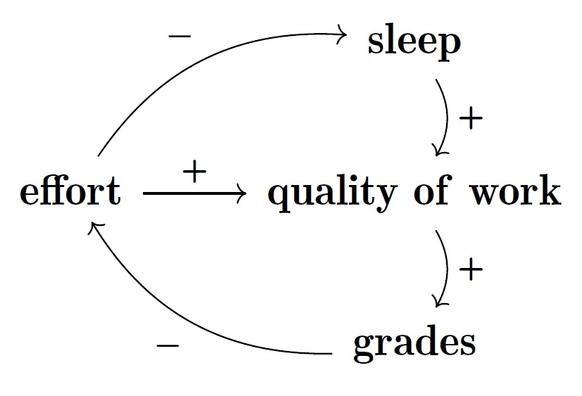The more cash you need, the more you want to borrow. In the short term this reduces your need for cash, but after a while it increases it. A vicious cycle.
The same pattern shows up all over the place, where a short-term fix makes the problem worse in the long run. This pattern is an example of a 'system archetype', and we can draw it as a diagram. Different instances of this archetype will give diagrams with different words - but the archetype is the pattern of edges with plus signs, minus signs and delays.
I've been working on the math of this stuff. I'm fascinated by how a general problem that haunts my life - I like to put off solving problems, and wind up making them worse - can be summarized as a simple diagram.
(1/n)
